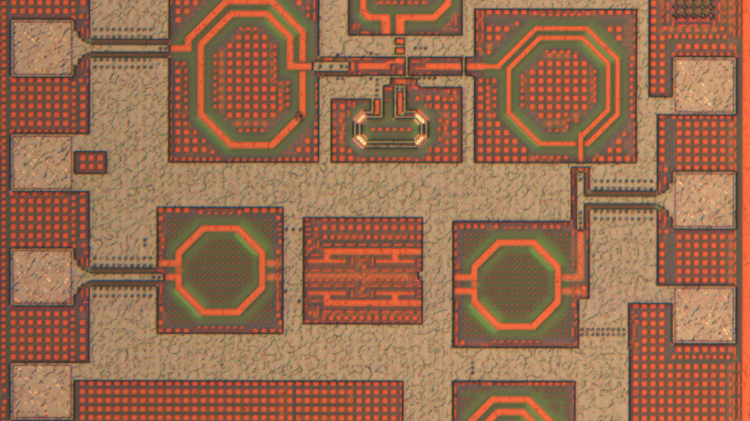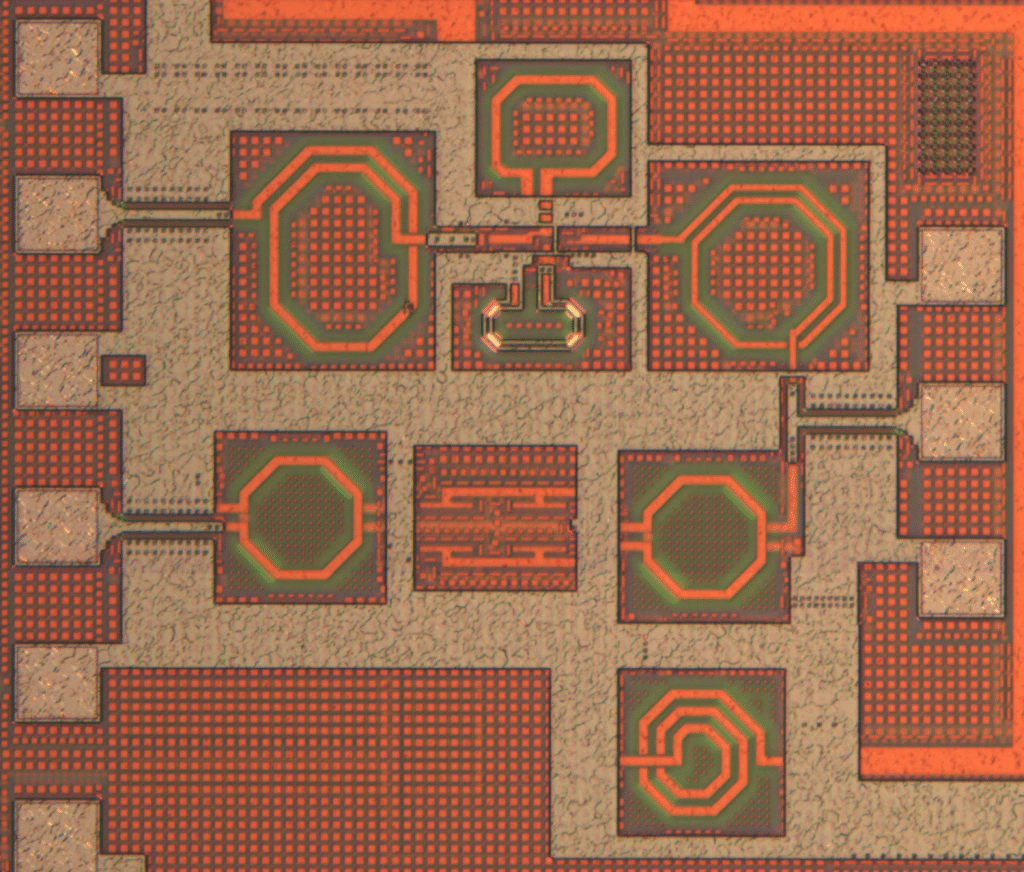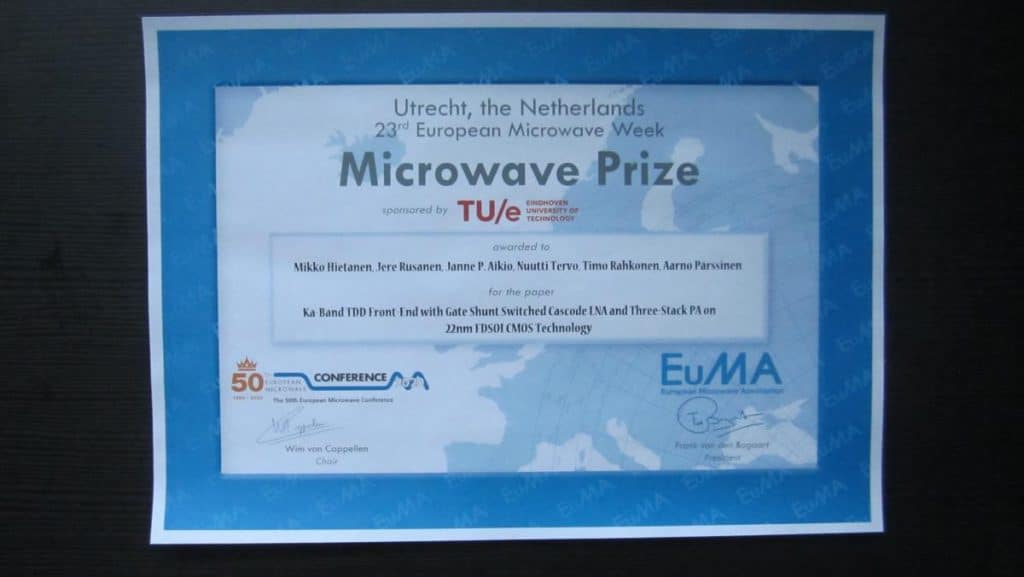
EuMC Microwave Prize to 6G researchers from the University of Oulu
The European Microwave Conference is Europe’s premier conference on microwave, millimetre-wave and terahertz devices, systems and technologies. The conference recently celebrated its fiftieth edition.
The EuMC Microwave prize for the best contributed paper to the conference was awarded to researchers from the Centre for Wireless Communications and the Circuits and Systems research group at the University of Oulu, Finland. This was the third time that the award came to Finland and the first to the University of Oulu.
“We highly appreciate this nomination. We ramped up 5G millimeter wave integrated circuits research at the university only some years ago in collaboration with two research units. And now we are moving in 6G Flagship to even higher frequencies and more complex research problems. This award indicates that we are on the right path and encourages us to move towards future challenges,” says Aarno Pärssinen, professor of radio engineering at CWC.
5G millimeter wave (mmW) radios will need a very large number of antennas for best performance. Therefore, electronics associated to each antenna element must be extremely compact in size and must contain capability to switch between transmit and receive modes efficiently. In the conference, the authors presented a 5G radio antenna front-end module with minimum semiconductor area and the impact of integration is clearly shown in the experimental results.
Performance of antenna front-end switch module with integrated transmit and receive amplifiers largely dictates the 5G system performance and therefore it is and has been a core research challenge. CWC and CAS researchers provided one method of co-designing the switch with amplifiers using s state-of-the-art silicon-on-insulator CMOS technology.
“Phased array systems, used in 5G and future telecommunication equipment, utilize large transmit/receive arrays. So, wasteful use of semiconductor area in the array elements increases system cost and makes system integration difficult. The simple integration technique presented in our work also minimizes the design effort needed for combining transmit and receive amplifiers into a front-end switch module, which in turn reduces the cost even more”, explains Mikko Hietanen the first author of the paper, as he refers to the importance of the research results.

The research community and the industry can benefit of the results to push the technology limits even further in large-scale 5G phased arrays, knowing what this method provides amongst other published work related to front-end design. Active and fruitful collaboration between academia and industry, as in here, is and will be a core part of the success. End-users, on the other hand, would see a small reduction in the price of telecommunication equipment due to cost savings in material and design efforts if the proposed method is applied.
“This is one example of many methods presented in radio front-end design and it will hopefully be used to help the research of this subject all around the world. Certainly, any design could be optimized until the end of time but that is more product development than science. However, this method will be re-evaluated in my research which takes the operation frequency towards 6G systems to see if the method is still valid”, Mikko Hietanen muses.
The awarded publication “Ka-Band TDD Front-End with Gate Shunt Switched Cascode LNA and Three-Stack PA on 22nm FDSOI CMOS Technology” is written by Mikko Hietanen, Jere Rusanen, Janne P. Aikio, Nuutti Tervo, Timo Rahkonen and Aarno Pärssinen from the University of Oulu. The research is carried out in two research units: CWC-RT (Radio Technologies) and CAS (Circuits and Systems). Research has been financially supported by Academy of Finland, 6G Flagship and Nokia Corporation Ltd. GLOBAL FOUNDRIES is acknowledged for silicon fabrication and technical support. The prize sponsor is the Eindhoven University of Technology.

Find out more about the EuMC Microwave Prize and The European Microwave Conference.